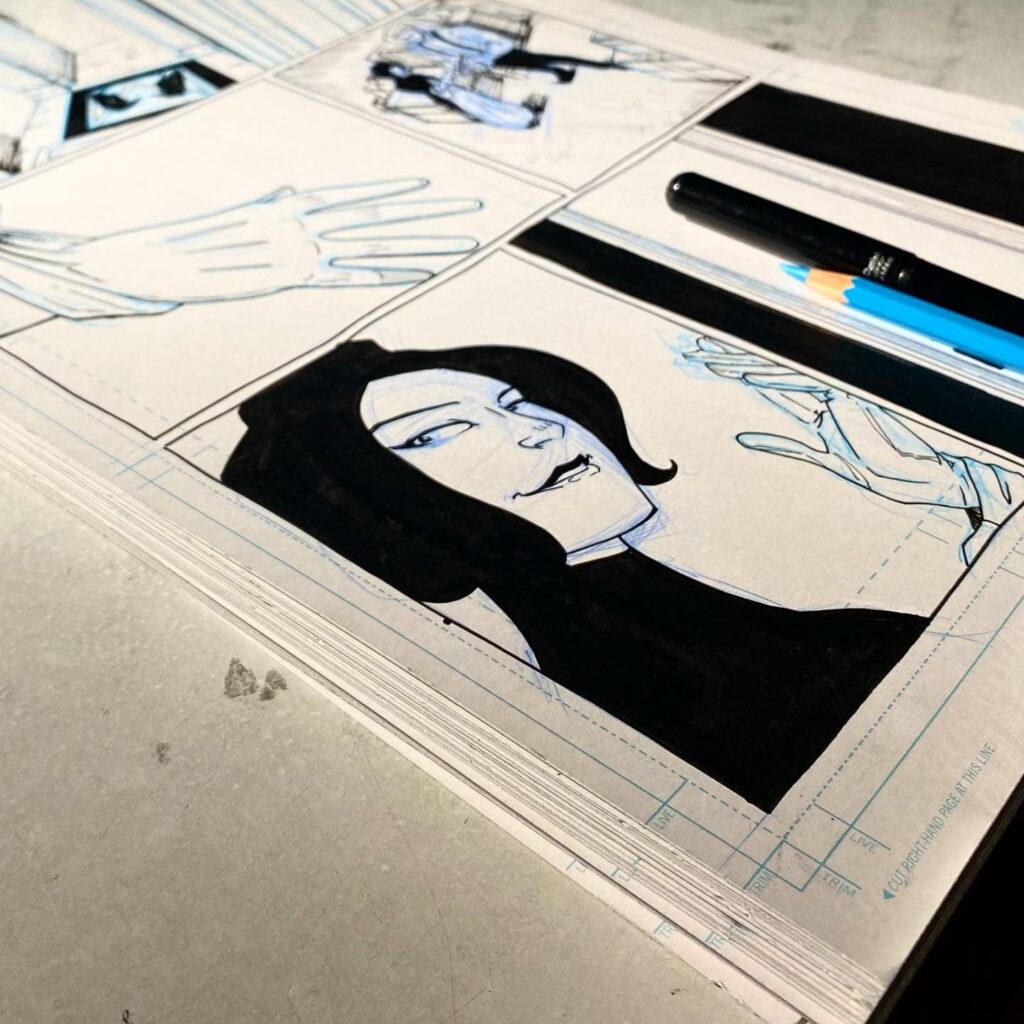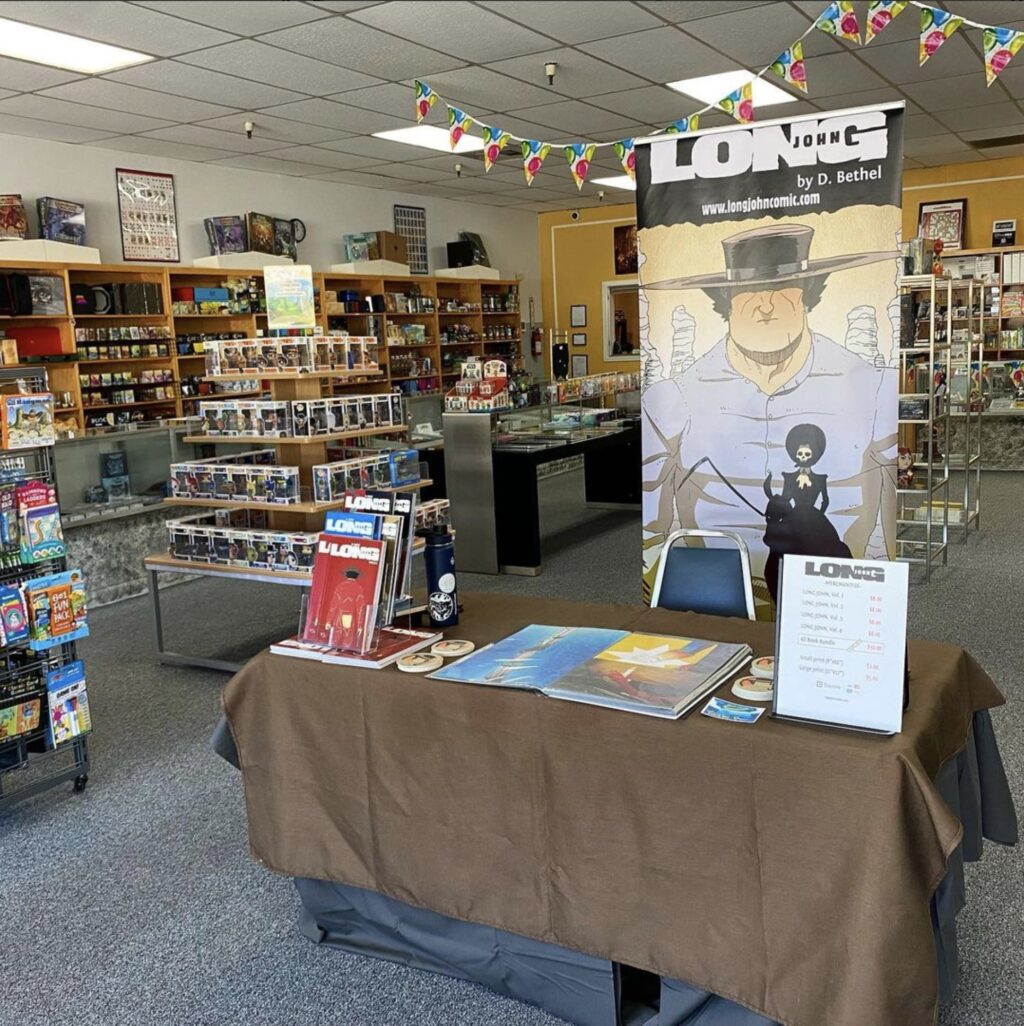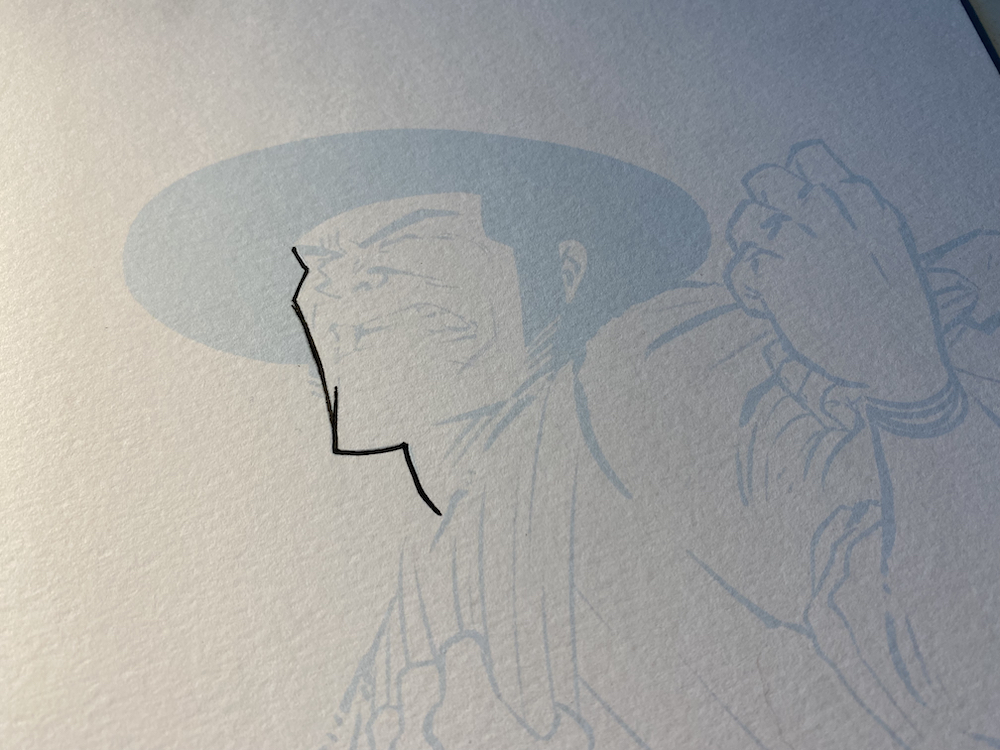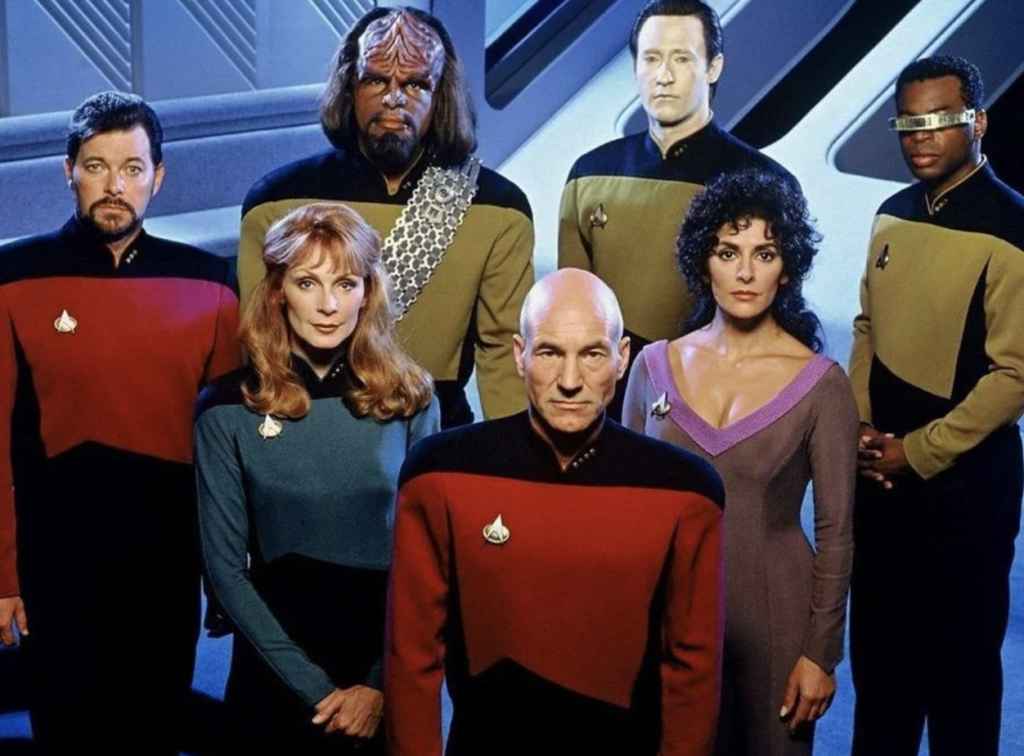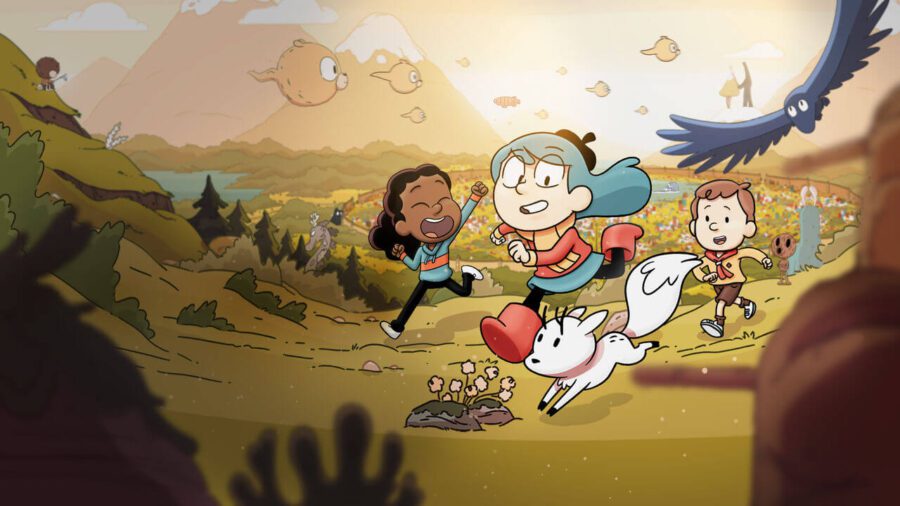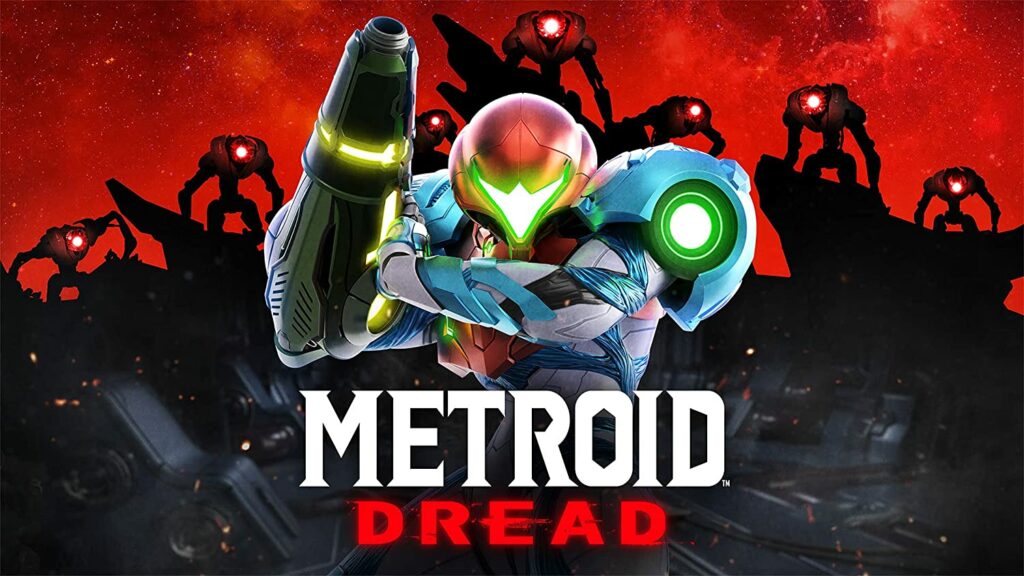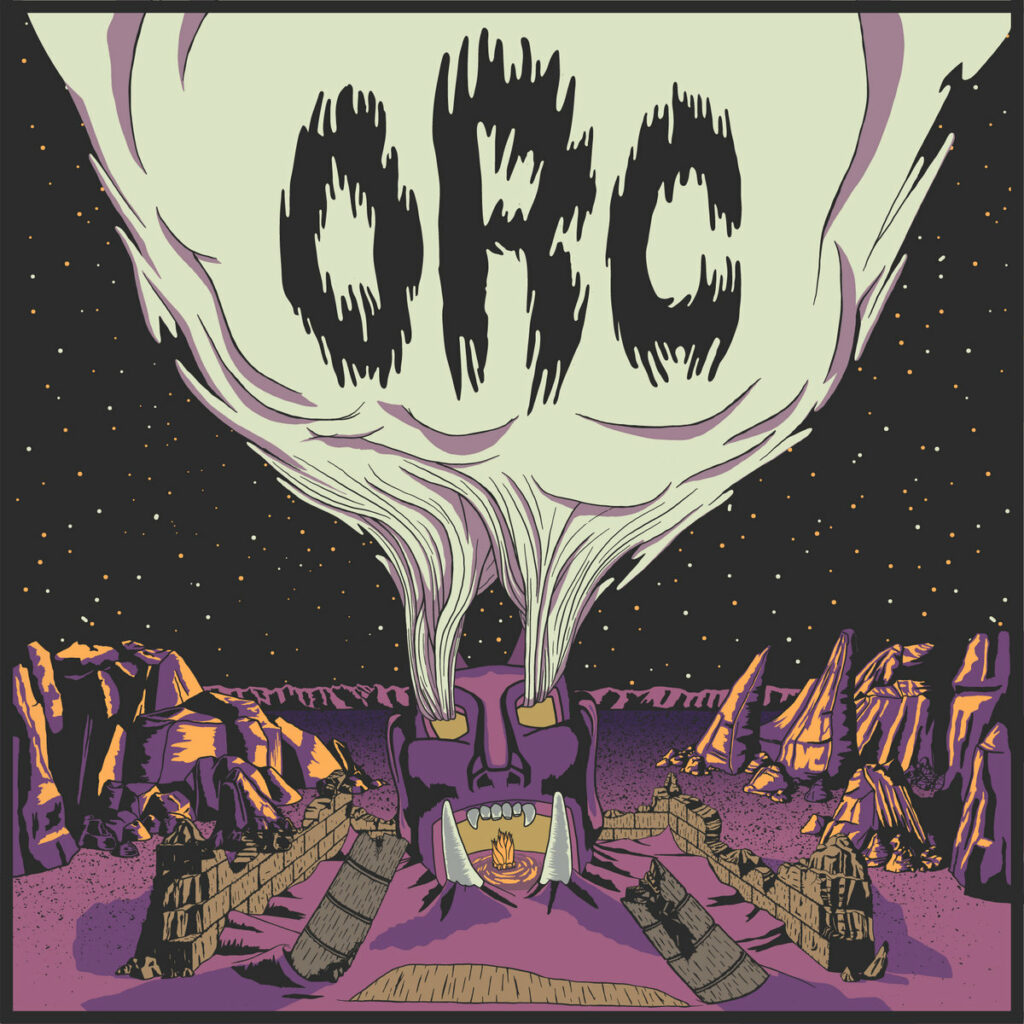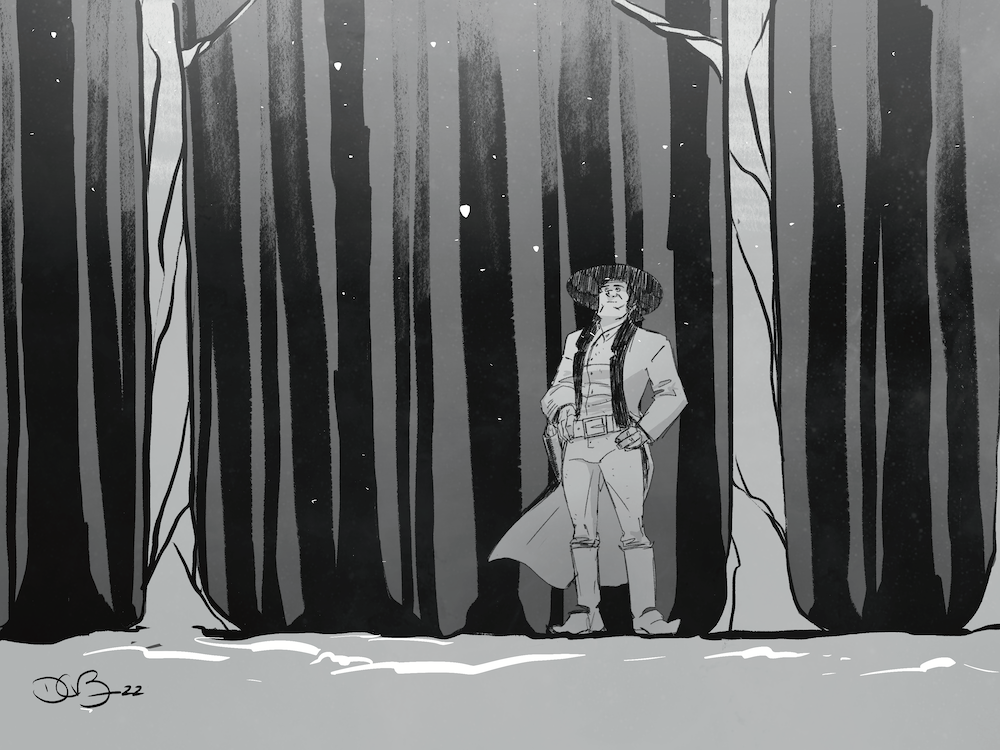2021 was a quiet year around here, mostly because it was all about getting Chapter 5 drawn (more on that below). Below lists the defining moments for me as a comic creator this year.
CHAPTER 5 GETS DRAWN
Much like chapter 4 before it, I was able to get chapter 5 drawn over the summer in its entirety. That being said, though drawing progressed speedily, it also has the distinction of being the chapter with the most panel redraws. This chapter contains my most technical drawings I had to do (while trying to maintain the sketchy nature of the style) so there were many times when I tried to cut corners but, in the end, wouldn’t let myself get away with it.
But, it’s nice to uphold the tradition established with the last book and it showed me that it’s a schedule that works and is reliable.
As of right now, the book is drawn, inked, scanned, and lettered. Right now, I’m laying down flat colors before going through and adding shading and highlights. In short, I’m past the halfway point, but it’s still a long road ahead. However, I feel confident with the May release date at this point.
THE RETURN OF SHOWS (KIND OF)
Like many people, I approached comic conventions and other shows with hesitancy. That being said, after the introduction of the vaccine, for a short while I felt comfortable enough to make a few appearances.
- Hobby Quest Grand Opening (1 August 2021)
I had the honor of being a guest during the week celebrating the opening of the amazing gaming shop, Hobby Quest, in Elk Grove, CA. It was my first step back out into public with the comic and it was the perfect way to get back out there. All the staff were really nice and helpful and everybody that came into the shop were fascinating in conversation and generous with their time.
- Books ‘N’ Brews at New Helvetia Brewing Company (21 August 2021)

My second event was another local one, Books ‘N’ Brews at New Helvetia Brewing, which was amazing. Another small local show, it was even better because it was held outdoors and I got to exhibit with my friends Kyrun Silva of Taurus Comics and Jon & Ben from Space Oddities. This was a lot of fun (and the beer was good, as is always the case at New Helvetia) and––sales or not (and they were good, considering being in the middle of a pandemic)––I will cherish the day I got to spend talking to friends and talking about being creative.
- Pull Up A Chair Expo-ish (25 September 2021)
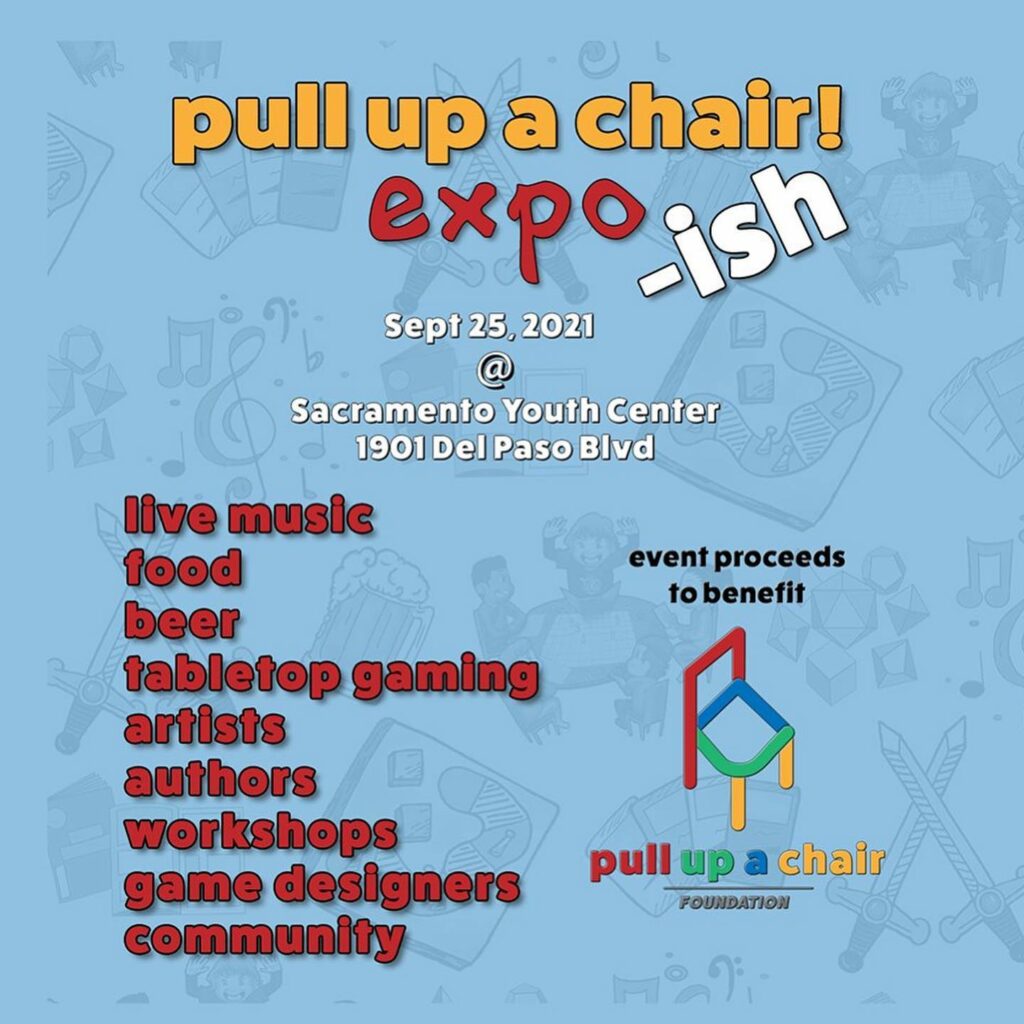
The last show I did for the year was the tabletop gaming-focused show Pull Up a Chair Expo-ish in Sacramento. Admittedly, I was a late add to the show, but it was also interesting and fun to exhibit at a show that wasn’t comic book-focused (similar to the Hobby Quest opening). Most importantly, it was a great show because of its educational focus; the Pull Up A Chair Foundation focuses on using tabletop games as educational tools, and I was proud to be a part of it.
Probably the most memorable part of the show was the honor I had to be part of a workshop with the other comic creators at the show, there to talk about process with people interested in making comics or storytelling in general.
LONG JOHN, CHAPTER 5
Chapter five (title and cover to be revealed at a later date) will be released this year barring a disaster of some sort. Within the next few months I’ll be revealing the cover and title before the actual publishing in the spring/summer (at which point it will be published online, as well). It’s a crucial book in the story as it sets up the endgame for Long John and the path of revenge and self-reflection he has been traveling down for the last four books.
Like with all the previous chapters, I’ll be posting the pages on the website as well as on Facebook. Because they were so fun last time, I will also be making short videos for each page (complete with original music) so you can get Chapter 5 however you want! I’m also in the planning stages for extra content for the physical book and eBook versions of Chapter 5. All of this to say, I can’t wait to show you more! Stay tuned!
Though there’s not a lot to share (yet), 2021 was a busy year. For now, let’s look forward to 2022! Again, I’ll publish updates here on the website, but I would also recommend following me on Instagram and the Long John Facebook page to make sure you don’t miss out on anything.

